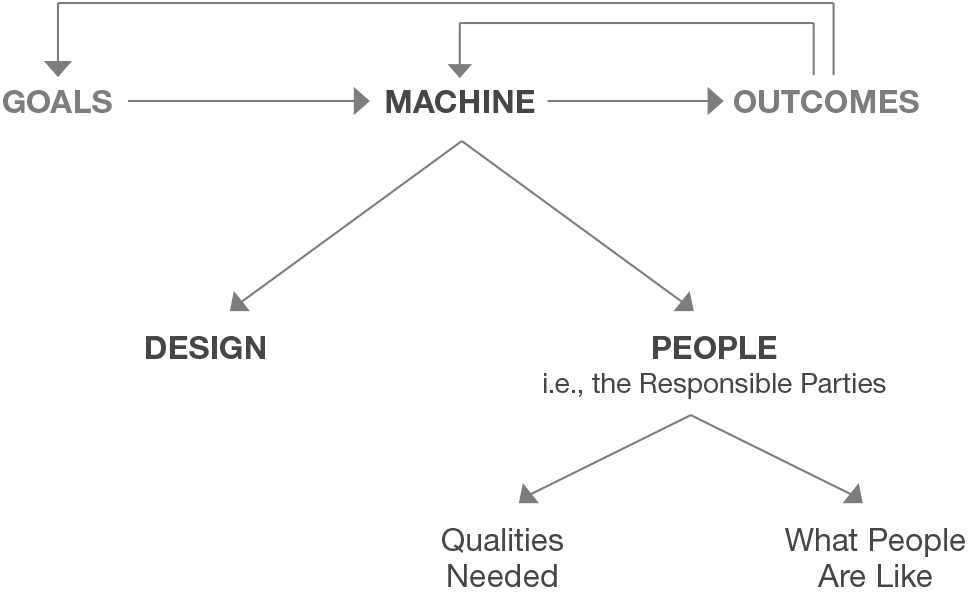61.Hear the click: Find the right fit between the role and the person.
Remember that your goal is to put the right people in the right design. First understand the responsibilities of the role, then what qualities are needed to fulfill them excellently, and then ascertain whether an individual has them. This matching process requires 1) visualizing the job and the qualities needed to do it well and 2) ascertaining if the individual has those qualities. I describe this process as “hearing the click,” because that’s the sound of finding the right fit between the role and the individual.
62.Pay for the person, not for the job.
Look at what they were paid before and what people with comparable credentials get paid and pay some premium to that, but don’t pay based on the job title.
63.Recognize that no matter how good you are at hiring, there is a high probability that the person you hire will not be the great person you need for the job.
Continue the “interviewing” process as intensely after they are on the job as before, and don’t settle.
64.MANAGE AS SOMEONE WHO IS DESIGNING AND OPERATING A MACHINE TO ACHIEVE THE GOAL
65.Understand the differences between managing, micromanaging, and not managing.
Micromanaging is telling the people who work for you exactly what tasks to do and/or doing their tasks for them. Not managing is having them do their jobs without your oversight and involvement. Managing means: 1) understanding how well your people and designs are operating to achieve your goals and 2) constantly improving them. To be successful, you need to manage.
65A. Managing the people who report to you should feel like “skiing together.” Like a ski instructor, you need to have close contact with your people on the slopes so that you can assess their strengths and weaknesses as they are doing their jobs. There should be a good back and forth with trial and error. With time you will be able to decide what they can and can’t effectively handle on their own.
65B. An excellent skier is probably going to be more critical and a better critic of another skier than a novice skier. A student probably thinks his ski instructor is fabulous, while an Olympic skier looking at the same ski instructor would assess him to be at a much lower level.
66.Constantly compare your outcomes to your goals.
Identify problems and diagnose whether the problems are with the way the organization is designed or with the way the people are handling their responsibilities. So remember how the following feedback loop to rapid improvement works.

And remember to do this constantly so you have a large sample size. You want to have a large sample size because 1) any one problem can either be a one-off imperfection or symptomatic of root causes that will show up as problems repeatedly; and 2) looking at a large sample size of problems will make clear which it is. Also, the larger your sample size, the clearer the root causes of your problems and the more obvious your solutions will be.
If you do this constantly in this way, your evolutionary process should look like this:

67.ELook down on your machine and yourself within it from the higher level.
Higher-level thinking doesn’t mean the thinking done by higher-level beings. It means seeing things from a top-down perspective—like looking at a photo of Earth from outer space, which shows you the relationships between the continents, countries, and seas, and then going down to a photo of your country, then down to your neighborhood, then down to your family. If you just saw your family without the perspective of seeing that there are millions of other families, and there have been many millions of other families over thousands of years, and observing how your family compares and how families evolve, you would just be dealing with the items that are coming at you as they transpire without the perspective.
68.Connect the case at hand to your principles for handling cases of that type.
Remember that every problem and task is just another “one of those”—i.e., another one of a certain type. Figuring out what type it is and reflecting on principles for handling that type of issue will help you do a better job. Whether or not you use the principles written here, you still must decide on a course of action and what guiding principles will be effective. Through this process, you will improve your principles as well as handle your issues better.
69.Conduct the discussion at two levels when a problem occurs: 1) the “machine” level discussion of why the machine produced that outcome and 2) the “case at hand” discussion of what to do now about the problem.
Don’t make the mistake of just having the task-level discussion, because then you are micromanaging—i.e., you are doing your managee’s thinking for him and your managee will mistake your doing this as being OK, when that’s not OK (because you will be micromanaging). When having the machine-level discussion, think clearly how things should have gone and explore why they didn’t go that way. If you are in a rush to determine what to do and you have to tell the person who works for you what to do, point out that you are having to do this, make clear that you are having to do this and that is what you are doing, and make it a training experience—i.e., explain what you are doing and why.
70SHAREDon’t try to be followed; try to be understood and to understand others. Your goal is to understand what is true and improve together. If you want to be followed, either for an egotistical reason or because you believe it more expedient to operate that way, you will pay a heavy price in the long run. If you are the only one thinking, the results will suffer.
70A. Don’t try to control people by giving them orders. They will likely resent the orders, and when you aren’t looking, defy them. An authoritarian approach also means you aren’t developing your employees, and over time they will become increasingly dependent on you, which damages all parties. Instead, the greatest power you have over intelligent people—and the greatest influence they will have on you—comes from constantly getting in synch about what is true and what is best so that they and you want the same things. People must desire to do the right things, and this desire must come from them. You can, however, show them the connection between fulfilling their responsibilities and their own well-being. Reaching agreement will come only from radically open discussions in which you are fair, reasonable, and open-minded.
70B. Communicate the logic and welcome feedback. When making rules or changes, explain the principles behind the decision. We want reasonable thinkers to operate sensibly. We achieve this through principles that are sound and well understood, applied and tested through open discussion. It is each person’s job to 1) evaluate whether he agrees with a decision, and if not, explain why; and 2) hold each other accountable for operating consistently within the organization’s principles. We want people who understand the principles that allow our community to succeed and possess strong ethics that motivate them to work by our rules, rather than to sneak around them. We want people who know that if the community works well, it will be good for them. We don’t want people who need to be ordered and threatened. We don’t want people who just follow orders.